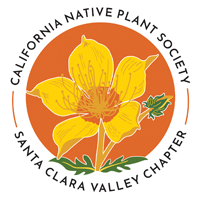- The gardening classes are small, only five or six students each, and are intergrade, each class has at least two students from the upper grades (4-6) matched with three or four students from the primary grades (2-3).
- The program has received strong support from the District Administration, the teachers, the Parent-Teacher organization, individual parents and most importantly, the students. The latter beg to be included in a new gardening class.
Classes are conducted for 40 weeks of the school year. Each student attends a weekly class for six to eight weeks, each class being about 40 minutes in length. Each new class parallels the academic quarter, more or less. Teachers release the students during their class time.
December and May plant sales pay for supplies purchased, mainly seeds and a few plants, labels and potting soil. Plants are sold to parents, employees and students at the school. The plants sell for about half the nursery price; students pay half of the adult price. And, do they buy!!
Class topics cover the following subjects:
- Identification, Use and Care of Tools
- Soil
What is it? Observe and compare the color, texture and drainage of clay, loam, sand and potting soil. What is a good growing soil for seeds, seedlings and garden plants? - Plant and Flower Parts
(As much as possible, use garden grown plants).
Indicate the important function of each of the parts of the plant. Using hand lens, identify the various flower parts. Explain the function of each of the flower parts. Observe the colors of the various parts and the number of petals, sepals, stamens, etc. - Basic Needs of Plants
The necessities for successful growing of plants, either in pots or garden soil: light/darkness, water, heat/cold, nutrients, space. - Plant Diversity and Adaptation
Discuss how plants change to meet their needs, how color, shape and position of leaves help California natives withstand a six month drought period or why some native plants go dormant with the advent of the hot weather. Indicate the importance of plant diversity in relation to both plants and animals
Discuss the importance of growing California native plants as compared with growing non-native, water-thirsty plants. - Pre-cycle, Re-use, and Re-cycle
Define terms. Explain the food cycle from single-celled microbes, plants, animals, to humans to food garbage.
Observe cafeteria garbage at various stages of decomposition. Use end product in garden soil and indicated its importance in soil building. - Care of Plants
Discussion of the most important reasons that plants fail to thrive. Generally, it is as simple as over watering or under watering.
Activities
- The students have grown California wildflowers from seed in 4-inch pots to transplant into six-packs. Cuttings are also taken from native plants (purchased from CNPS plant sales) as well as plant divisions of suitable materials--iris, blue-eyed grass or other perennials and bulbs.
- Plant Communities can be studied throughout the year--observing during the summer dormant period through September-October, the beginning of the California native plant's spring---after the first heavy rains in October-December and the burst of growth and bloom in the full native plant spring that comes with the advent of warm weather.
- The uses that the Native Americans made of the California native plants can also be included in the curriculum. The collection of greens, such as miner's lettuce and red maids, seeds used for pinole and meal, and bulbs can be studied and the various plants grown on campus. Furthermore, the study of the care given our earth by the Native Americans is a good beginning for a pre-cycling/re-use/re-cycling lesson or program.
- Native plants used as larval or food sources for butterflies or nectar sources for hummingbirds can be planted on the school grounds. Butterflies prefer plants in sunny areas. Plants that attract other birds can also be a focus of classroom studies. Students can observe wildlife in the garden and their appearance at various times of the year.
- MaryBeth suggests the following publications for more ideas and other plant-related activities:
- Botany for All Ages
- GrowLab
- Activities for Growing Minds
- Growing the Classroom Life Lab
- Project Learning Tree
- The Kids Gardening Book.

